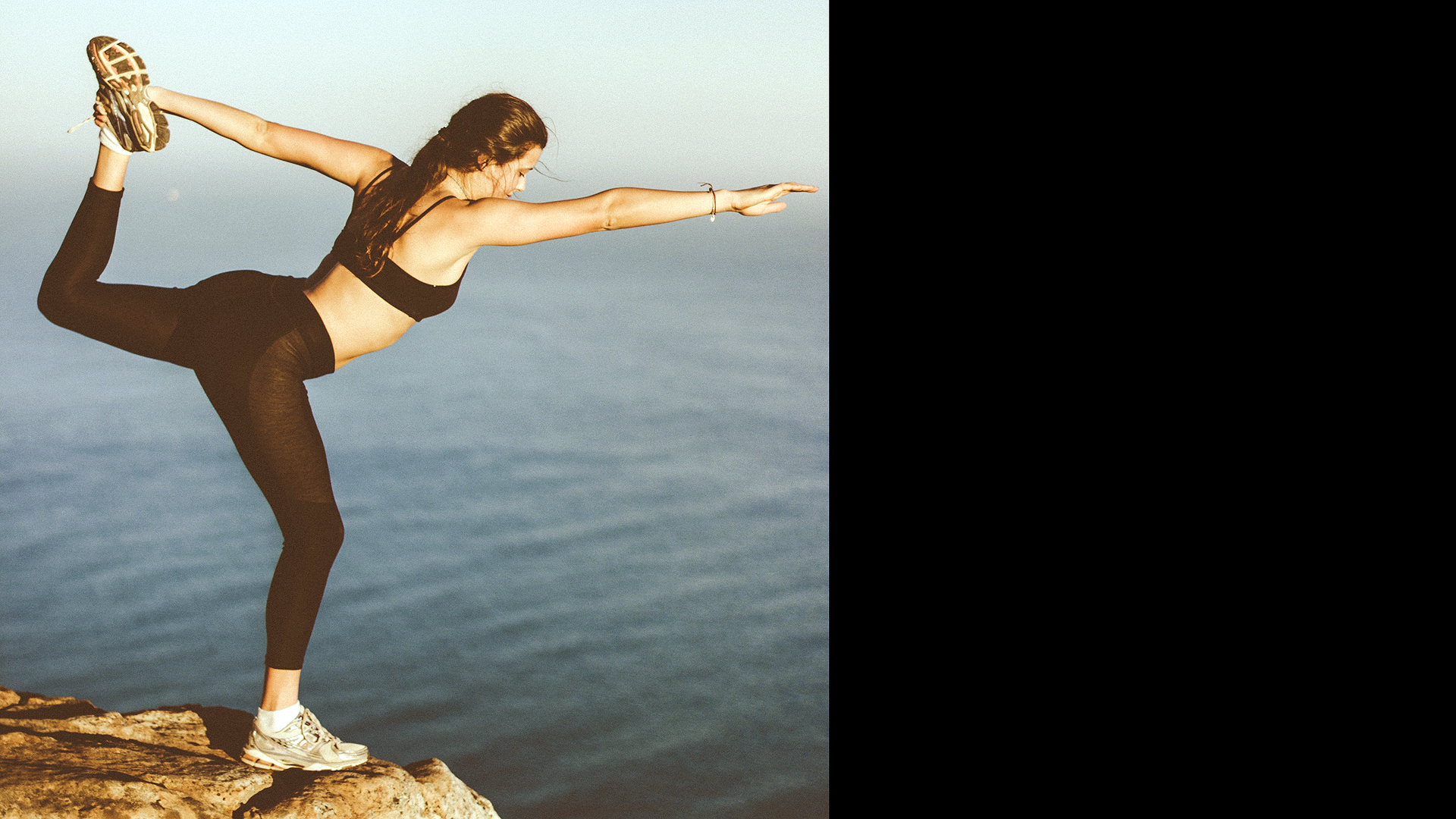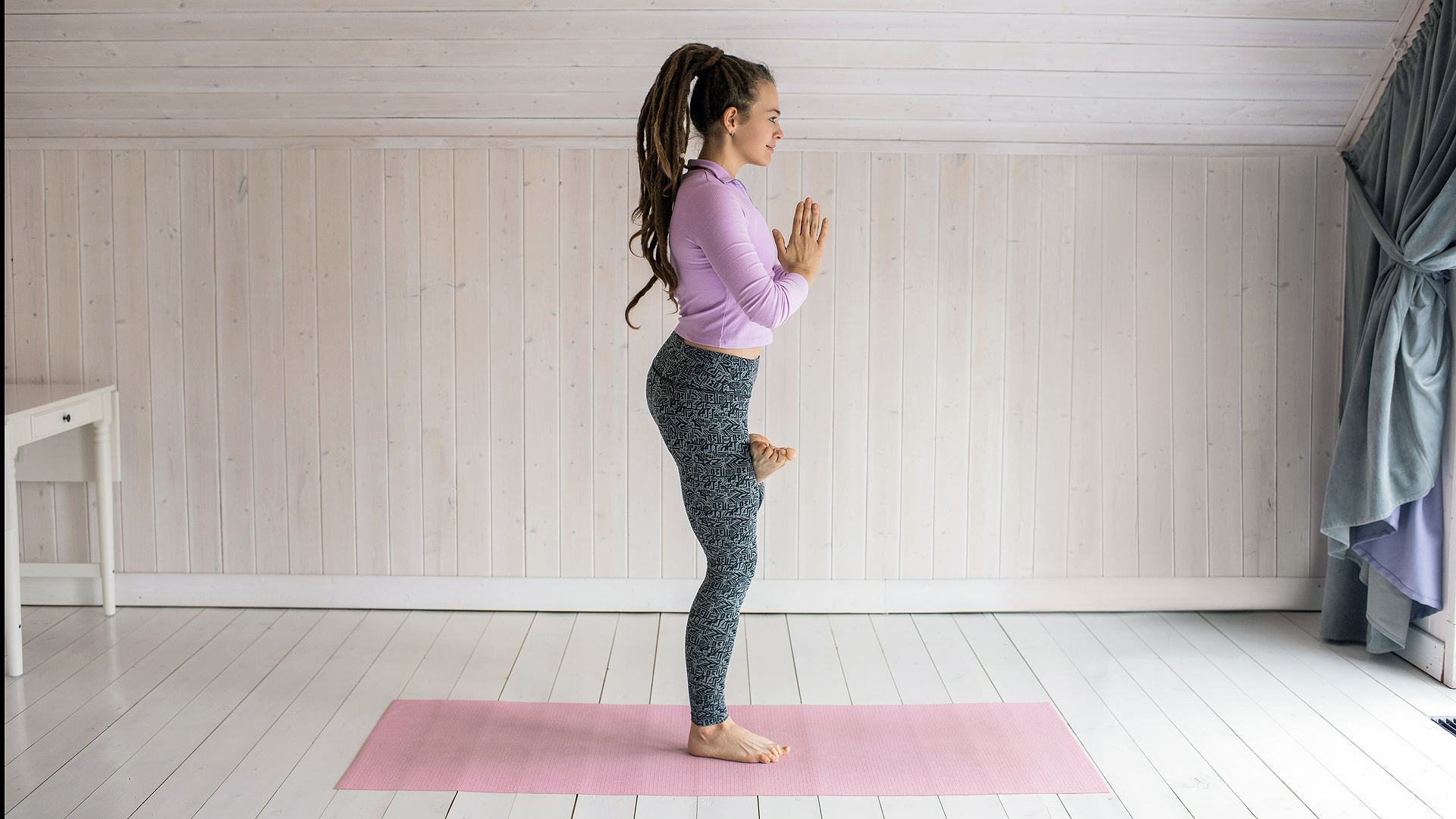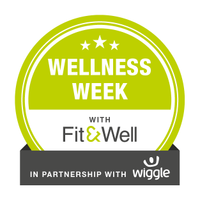
These are the best exercises for balance. So whether you’re a regular gym-goer who wants to work on your stability, or a senior who’s exercising to prevent falls, here’s how to improve your balance with a few simple exercises
Improving your balance is vital to prevent falls and injury, particularly as you get older. Although it doesn’t sound as glamorous as building strength, it’s well worth incorporating into your workout routine at any age.
There are lots of ways you can fit balance exercises into everyday life – if you can remember to do it! Standing on one leg when you’re doing tasks such as brushing your teeth, waiting in a queue or washing up is one easy way to start working on your balance. Forms of exercise such as yoga, tai chi and dancing all incorporate exercises for balance somewhere along the way, but if you’re not doing any of those, here are some exercises to improve your balance.
In summary: add these exercises for balance into your workout routine today!
Best balance exercises to add to your workout

These more advanced moves will help stabilise you in everyday movement and prevent injuries too. If you're new to exercise or balance, scroll down for our beginners' guide.
Single-leg deadlift
Use a kettlebell or dumbbell to perfect this deadlift.
Sign up to the T3 newsletter for smarter living straight to your inbox
Get all the latest news, reviews, deals and buying guides on gorgeous tech, home and active products from the T3 experts
Technique tips
Start slowly – steady is better for stability, so don’t rush it.
This exercise challenges the core, so engage it at all times.
Flex your foot and keep your back flat.
Focus on the weight’s journey to the ground rather than looking forward.
Plank on a stability ball
Bring in the BOSU or stability ball to work your plank harder.
Technique tips
This takes your plank to the next level, so you’ll need more core strength – squeeze your glutes and engage your core as you would during a normal plank.
Try 30 seconds for a start, then build up to a minute’s hold.
Don’t forget to breathe deeply!
Single-leg bent over row
This is a good way to progress your bent over row – and add stability. Your core is working as well as your legs, plus you’re building strength in the arms and shoulders. A great all-rounder that improves your balance too.
Technique tips
Go slow and steady to keep your balance – this is not one to be rushed.
Use a dumbbell or kettlebell to add weight, or practise the movement with a clenched fist until you’re feeling confident.
Keep your supporting leg strong and slightly bent, while your back leg curls with a flexed foot.
Standing crunch with clap
A great way to work your core and improve your balance at the same time.
Technique tips
Keep your supporting leg strong and your core engaged. Your working leg should be at 90 degrees.
You’ll feel this in your core, which is working hard to stabilise your body.
If you want to make this harder, add a couple of dumbells – start with 3kg.
Balance for beginners

Not a regular in the gym? No problem. You can do these simple balance exercises at home – and they’re great for older people who want to strengthen their stability to prevent falls.
Tightrope walk
Stand up straight and try ten steps of this heel-to-toe walk to get your balance.
Technique tips
Start near a wall if you’re not sure how well you can balance.
Engage your core and stretch your arms out wide to help you.
Wobbling? Focus on an object that’s not moving to steady yourself.
Lateral leg raise
This is an exercise you can try standing or lying down if you’re unsure about your balance. It works your gluteus medius, which helps with your stability. Start with ten repetitions per leg.
Technique tips
Start slow – only move your leg as much as feels comfortable and use a chair if you’re worried about your balance.
It’s fine to try this exercise lying down, too. You might find you can do more repetitions if you’re lying on your side.
Standing on one leg
Yes, this sounds simple, but standing on one leg is one of the best basic exercises for balance. Practise a couple of times a day and when you’re feeling confident, try closing your eyes (as long as you’re near a wall so you don’t fall over.) Once you close your eyes, it becomes a very different experience – you’ll start to sway, but keep practising.
Technique tips
Focus on a still object and engage your core to steady yourself.
Don’t be surprised if you start to wobble once you close your eyes, but keep trying.
Wellness Week on T3
Wellness Week is brought to you in association with our new sister site Fit&Well and Wiggle. A new standard for a new age of wellbeing, Fit&Well helps you live a better, healthier, happier and longer life. Check it out today at www.fitandwell.com and accelerate your wellness journey.
-
 3 overrated shoulder exercises, according to a fitness expert (and what to do instead)
3 overrated shoulder exercises, according to a fitness expert (and what to do instead)Sculpt 3D shoulders whilst minimising injury with these three alternative exercises
By Bryony Firth-Bernard Published
-
 Polar’s new subscription feature lands in the shadow of Garmin’s Connect+ rollout
Polar’s new subscription feature lands in the shadow of Garmin’s Connect+ rolloutPR genius or timing disaster? Polar’s new Fitness Programme adds adaptive training to its ecosystem
By Matt Kollat Published
